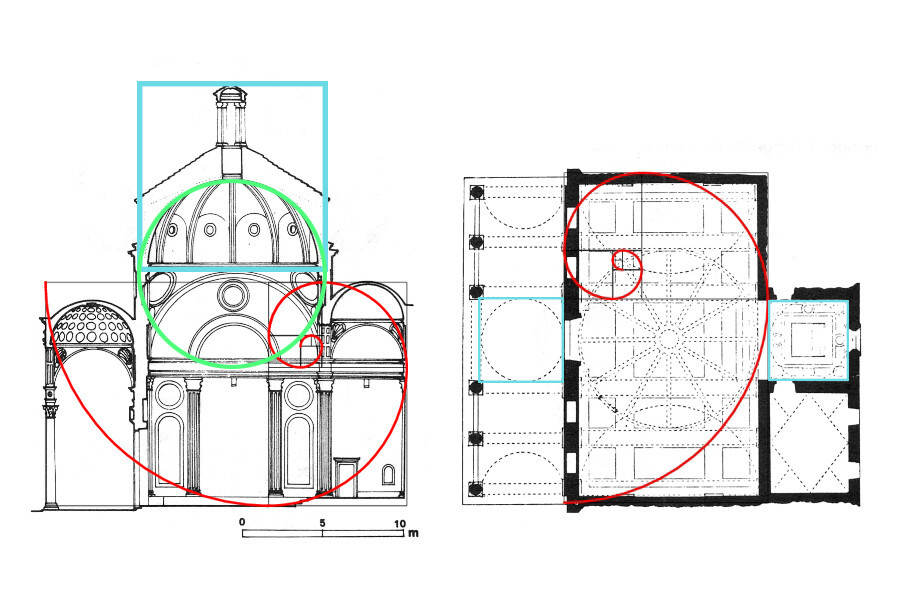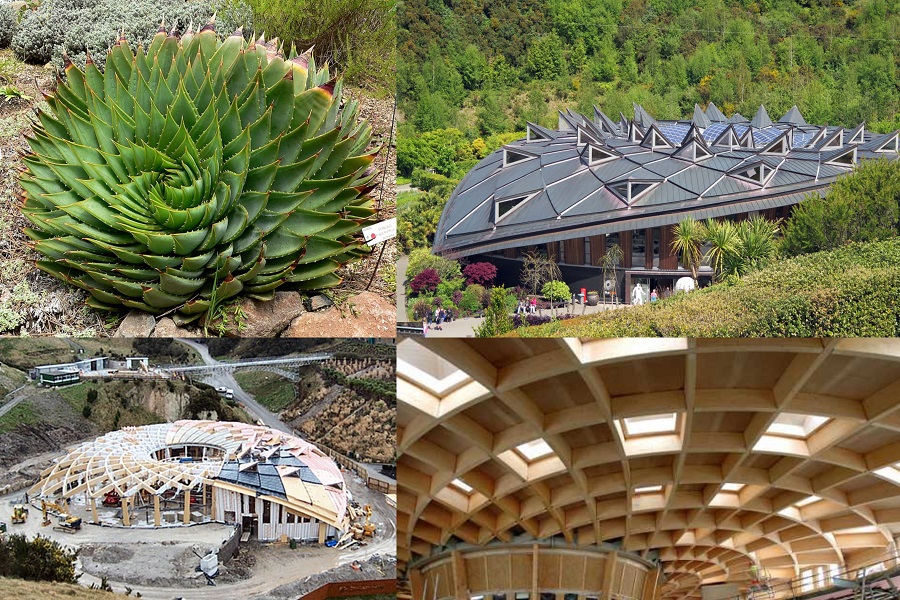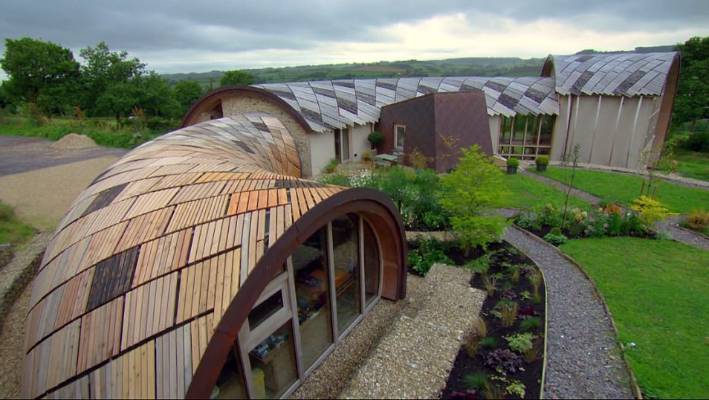PABLO GARCÍA-RUBIO | Tungsteno
In 2015, Steven and Elizabeth Tetlow set out to build their new home in the Devon region of southern England. They were inspired by nature to develop a structure that would coexist with its surroundings, making use of its contours and respecting the environment. The curved design of the Snake House is based on the shape of ammonite fossils—a subclass of extinct cephalopod molluscs—found in the area and the Fibonacci spiral, known as nature's secret code or the divine sequence. Is the so-called golden ratio just an intriguing way to achieve aesthetically pleasing designs, or does it also serve to make structures more environmentally friendly?
From the earliest historical structures to the present day, proportion has been a fundamental part of architectural design and engineering. The Fibonacci spiral originates from the growth pattern observed in nature and is a visual expression of the golden ratio. This proportion is found by dividing a line into two parts so that dividing the longer part by the shorter part gives the same result as dividing the entire line by the longer part. It is expressed by the number phi: 1.618.
The Fibonacci spiral originates from the growth pattern observed in nature. Credit: BBC.
There are many manifestations of this ratio in nature including the leaves of some plants, the cones of conifers, and the seeds in the centre of a sunflower. Fibonacci spiral patterns could be useful for optimising the arrangement of leaves or for capturing sunlight more efficiently. For centuries, the golden ratio has also inspired the design of all kinds of buildings. Here we review some historical examples to understand how this ratio has been applied in different periods.
Pazzi Chapel, Filippo Brunelleschi (1443)
Some studies have tried to prove that the golden ratio was used in the structures of past civilisations such as those of ancient Greece or Egypt, for example in the iconic Great Pyramid of Giza complex. But everything seems to indicate that in reality these types of constructions pursued other geometric goals whose aim was to achieve order and balance.
It was in the Middle Ages, from the 13th century onwards, when, following the introduction of Arabic numerals into Europe by disseminators including Fibonacci himself, these measurements began to be taken into account when designing structures. The intention of Gothic and Renaissance architects was to imitate nature in order to endow structures with a spiritual dimension, thereby achieving a closer connection with God.
One example is the Pazzi Chapel, built in Florence by the Italian Renaissance architect Brunelleschi. Several studies have concluded that, both in its layout and facade, he used proportions similar to the golden ratio, and combined rectangular and circular elements to symbolise the union between the human and the divine.

Villa Savoye, Le Corbusier (1929)
Although modern architecture largely rejected classical standards, one of the most influential architects of the 20th century, Le Corbusier, inherited an interest in the golden ratio and the relationship between mathematics and nature. While curves and spirals are rarely found in his work, an obsession with proportion pervades his designs.
Le Corbusier inherited an interest in the golden ratio and the relationship between mathematics and nature. Credit: Archiproportion.
In fact, he developed a scale of visual measures that combined human proportions and the Fibonacci sequence, which he called the Modulor. Taking as a reference the measurements of a man with his arm raised, the proportions of the Modulor were intended to harmoniously represent proportion in structures. In the Villa Savoye building on the outskirts of Paris, he used these proportions to scale all the spaces and measurements.
The Core, Eden Project, Jolyon Brewis (2005)
Contemporary architecture no longer considers proportion as a central element of design. Without abandoning it, other elements such as energy efficiency, sustainability and the responsible use of materials are now considered a priority. This approach to sustainable design looks to nature to find optimal forms of adaptation that have evolved in the natural environment and then uses technology to apply them to the design of buildings.
Biomimicry was also the inspiration for the central structure of the Eden Project, an environmental education project in the south of Britain. This building, known as The Core, is inspired by the sequence described by Fibonacci, specifically its application to explain mathematically how plants reproduce. It was also constructed in an environmentally responsible manner. While underground pipes heat the air before it enters the building, photovoltaic panels on the roof provide electricity. The insulated walls are made of recycled newspapers.

The Core building is inspired by the sequence described by Fibonacci, and other shapes found in nature. Credit: Eden Project.
From the divine to the sustainable
While in antiquity the Fibonacci spiral was a way of connecting with God, in modern architecture it has served as an aesthetic reference for the application of more balanced proportions. Today, however, there is a trend towards sustainable construction, which places the functional above the aesthetic. As a result, elements such as proportion have taken a back seat.
The quest for environmental efficiency in buildings has led to the use of curved shapes, such as those inspired by the Fibonacci spiral, to create structures that are better integrated into the landscape. Curves, together with the use of new materials, reduced emissions and better orientation, contribute to building more sustainable and environmentally responsible structures. However, the use of the golden ratio has not proven to have an advantage over other curved shapes in the quest for greater energy efficiency or cost savings in materials.
· — —
Tungsteno is a journalism laboratory to scan the essence of innovation. Devised by Materia Publicaciones Científicas for Sacyr’s blog.
